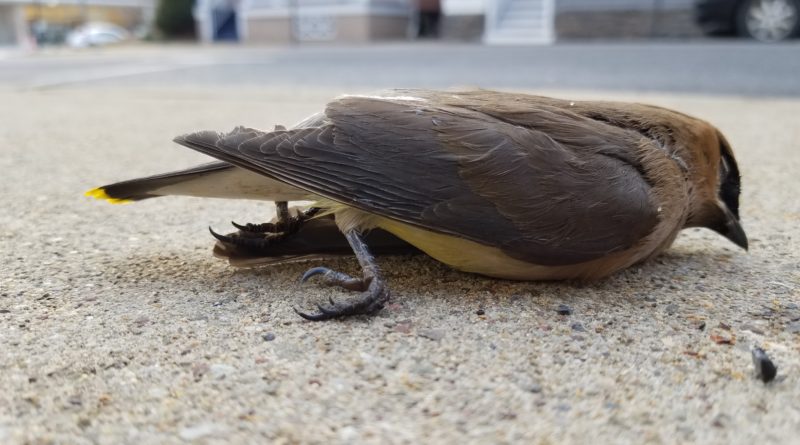Seven simple solutions to save songbirds from window-struck sorrow
Shortly after the thud heard ’round the newsroom, the feather-fleeced victim laid motionless on the sidewalk two stories below.
The cedar waxwing became the highly reflective window’s first casualty of the season — a rite of winter’s passage as reliable as a blooming crocus or peeping spring peeper.
According to a 2014 study by the Cornell Lab of Ornithology, upwards of one billion birds die from window strikes in the U.S. each year.
The culprit is usually the reflective properties of the glass itself — to many birds, it appears like a clear flight path that ends up in tragedy. Back on the family farm near Watsontown, each spring brings out a territorial cardinal who repeatedly attacks what it likely assumes is a rival male in the reflection of the window. The result is a long series of thuds, beak marks on the window and eventually a dazed cardinal on the ground wondering what just happened.
The good news is that you can greatly reduce the danger your home’s windows post to birds with some simple remedies, according to Christine Sheppard, who directs the Bird Collisions Program of the American Bird Conservancy.
Among the program’s suggestions is to mark the glass in four-inch segments using one of the following techniques:
Tempera paint or soap. Mark the outside of the window with soap or tempera paint, which is inexpensive and long lasting. You can use either a grid pattern no more than 4 inches by 2 inches or get creative and paint patterns or artwork on your window.
Decals. Put decals, stickers, sun catchers, mylar strips, masking tape, or other objects (even sticky notes) on the outside surface of the window. These are only effective when spaced very closely.
ABC BirdTape. This long-lasting tape offers an easier way to apply the correct spacing of dots across your window.
Acopian BirdSavers. Also known as “zen curtains,” these closely spaced ropes hang down over windows. They do the work of tape or decals but are easier to install and can be aesthetically pleasing. You can order them to fit your windows or make your own.
Screens. Installing mosquito screens over your windows is very effective, as long as they are on the outside of the window and cover the entire surface.
Netting. Cover the glass on the outside with netting at least three inches from the glass, taut enough to bounce birds off before they hit.
One-way transparent film. Products such as Collidescape permit people on the inside to see out, but makes the window appear opaque on the outside. It can reduce the amount of light that comes in your window (this can also reduce your cooling costs), according to Sheppard.

